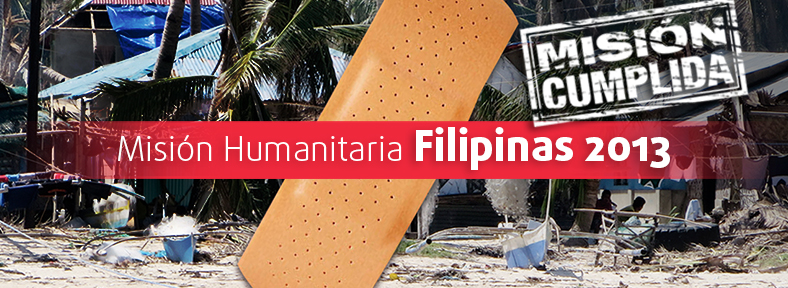Philippines Mission 2013
The Philippines is an archipelago made up of 7,107 islands, which include Bantayan, the focal point of the operations of our Foundation. Owing to their location, the islands are hit by some 20 typhoons a year during the rainy season. On 7 November 2013, Typhoon Haiyan (also known as Yolanda) hit the island of Bantayan, causing many deaths and leaving a trail of devastation in its wake. According to the WHO, more than 16 million people suffered the consequences of this phenomenon.
After the destruction caused by Haiyan, the situation of many families was aggravated, not only because they lost their homes, but also due to the precarious conditions of salubriousness in which they were obliged to live. In disasters such as this, hygiene and sanitation take on special importance in preventing infectious and transmissible diseases. Ensuring basic measures of hygiene is essential in order to maintain good community health.
Once the supertyphoon had passed, the SAMU Foundation, in conjunction with SAMU’s Emergency Medicine School and other organisations, set up a mission in the northern part of Cebu Island which remained there for more than 5 months, with a total of 27 doctors, nurses and logistics workers divided into 5 contingents. During our stay there, many medical missions were carried out on temporary bases and with itinerant teams, cooperating with other organisations present in the region in distributing food and performing logistic operations and medical training activities for the local population.
Date of the mission
- Name of the mission: Operation Philippines 2013.
- Country: Philippines.
- Departure date: 15 November 2013.
- Return date: 25 April 2014.
- Population attended: Panitugan, Atop-atop, Baigad, Biagayag, Baod, Biactos, Bunakan, Kabac, Doong, Hagdan, Hilotongan, Guiwanon, Kabangbang, Kampingganon, Kaongkod, Kodia, Mojon, Okoy, Patao, San Agustin, Sillon, Sungko, Suba, Sulangan, Tamiao and Tabagak, among others.
- Number of contingents: 5.
- Number of people from SAMU taking part: 27.
- Types of professionals: doctors, psychiatrists, nurses, psychologists, logistics workers, engineers and emergency technicians.
- Number of interventions: 7,340.
- On-base interventions: 1,079.
- Itinerant interventions: 6,261.




